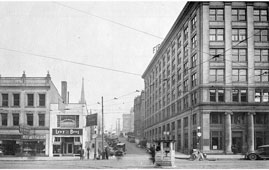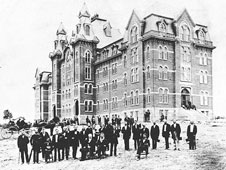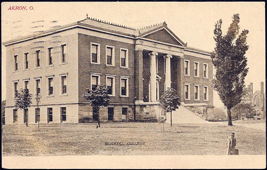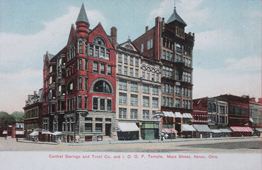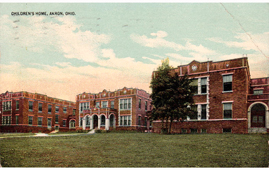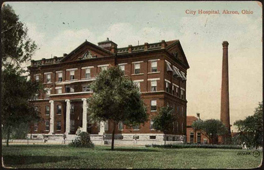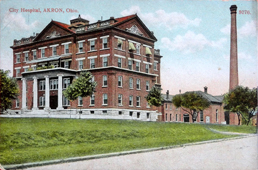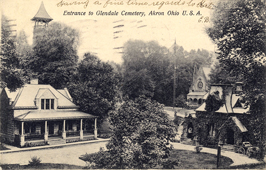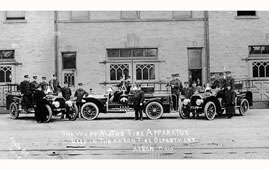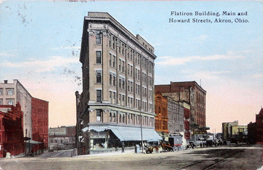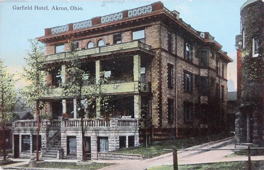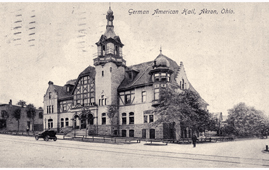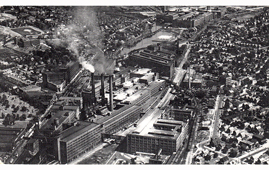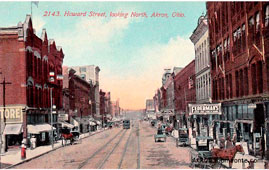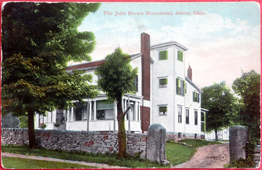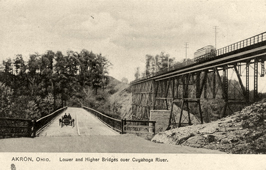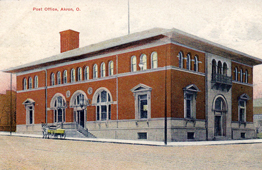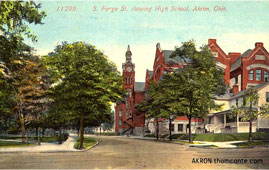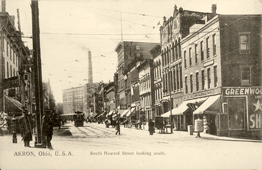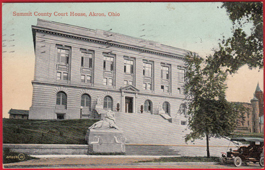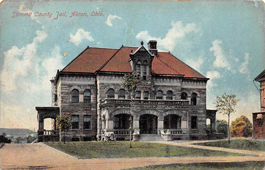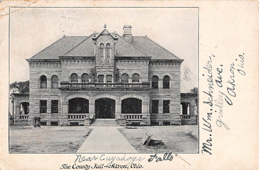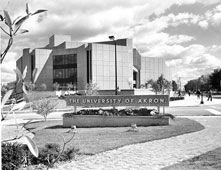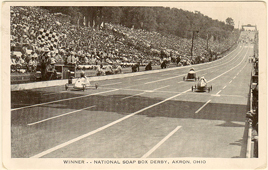A small historical reference
Geography: Akron is the fifth-largest city in the U.S. state of Ohio and is the county seat of Summit County. It is located on the western edge of the Glaciated Allegheny Plateau, about 40 miles (64 km) south of downtown Cleveland.
The city was founded in 1825 by Simon Perkins and Paul Williams, along the Little Cuyahoga River at the summit of the developing Ohio and Erie Canal.
The name is derived from the Ancient Greek word ἄκρον : ákron signifying a summit or high point. It was briefly renamed South Akron after Eliakim Crosby founded nearby North Akron in 1833, until both merged into an incorporated village in 1836. In the 1910s, Akron doubled in population, making it the nation's fastest-growing city.
A long history of rubber and tire manufacturing, carried on today by The Goodyear Tire & Rubber Company, gave Akron the nickname "Rubber Capital of the World". It was once known as a center of airship development. Today, its economy includes manufacturing, education, healthcare, and biomedical research; leading corporations include Gojo Industries, FirstEnergy, Huntington Bank, and Charter Spectrum.
Notable historic events in Akron include the passage of the Akron School Law of 1847, which created the K–12 system; the popularization of the church architectural Akron Plan, the foundation of Alcoholics Anonymous, the Akron Experiment into preventing goiters with iodized salt, the 1983 Supreme Court case City of Akron v. Akron Center for Reproductive Health; and portions of the 2014 Gay Games.
A racially diverse city, it has seen noted racial relations speeches by Sojourner Truth in 1851—the Ain't I A Woman? speech; W. E. B. Du Bois in 1920; and President Bill Clinton in 1997. In 1914, Marcus Garvey founded the Universal Negro Improvement Association in Akron. Episodes of major civil unrest in Akron have included the riot of 1900, rubber strike of 1936, and the Wooster Avenue riots of 1968.
Date of foundation:
History:
Population: 198 100
Sights:
| 
